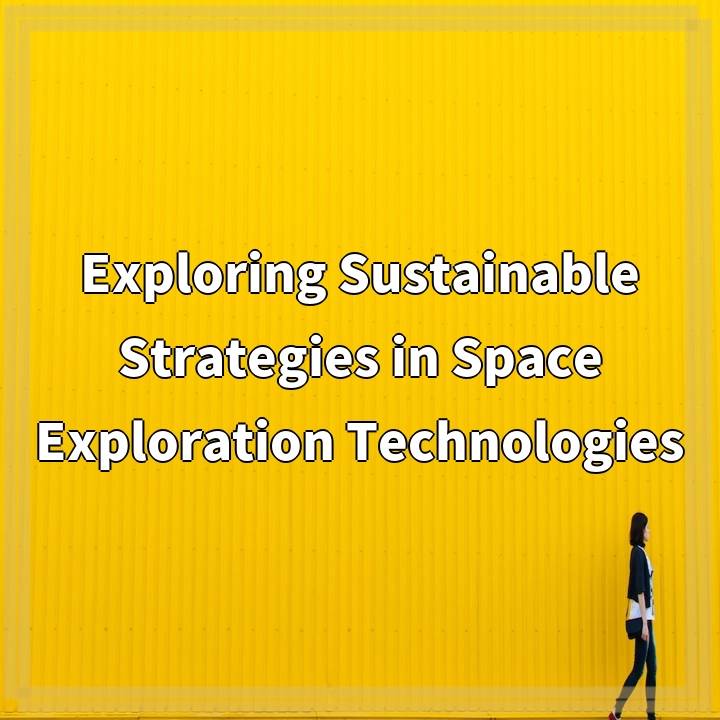
What it is:
Exploring Sustainable Strategies in Space Exploration Technologies involves investigating and promoting environmentally friendly approaches for space exploration. With the increasing interest in space travel and the growing number of missions being planned, there is a need to address the potential environmental impact of these activities. This field aims to develop and implement strategies that minimize resource consumption, waste generation, and greenhouse gas emissions associated with space exploration.
Real-world problems:
1. Resource management: As space missions require a significant amount of resources, including fuel, water, and materials, finding sustainable ways to manage these resources is critical. Limited resources in space and the high cost of transporting supplies make it essential to explore efficient utilization and recycling methods.
2. Waste management: Space missions generate various forms of waste, such as rocket fuel residues, debris from spacecraft, and even human waste. Proper waste management systems are necessary to prevent pollution and minimize the accumulation of space debris, which poses a significant risk to satellites and future missions.
3. Energy consumption: Traditional space exploration technologies rely heavily on non-renewable energy sources, like fossil fuels. Developing sustainable energy alternatives, such as solar or nuclear power, can help reduce the environmental impact and the reliance on limited resources.
4. Climate impact: The carbon footprint associated with space missions, including the manufacturing and launching of rockets, contributes to greenhouse gas emissions. Addressing the climate impact of space exploration and finding ways to reduce or offset these emissions is crucial for a sustainable future.
5. Planetary protection: Ensuring the preservation of celestial bodies, such as the Moon or Mars, is also a critical concern. Strict protocols and guidelines are necessary to prevent the contamination of potential biospheres and to preserve the scientific integrity of these celestial bodies.

Solutions for Sustainable Strategies in Space Exploration Technologies
1. Resource management:
Implementing efficient resource management techniques such as water recycling systems, regenerative life support systems, and 3D printing technologies can help optimize resource utilization and reduce the need for continuous resupply missions.
2. Waste management:
Developing advanced waste management systems like compactors, incinerators, and recycling processes can effectively reduce the accumulation of space debris and minimize pollution risks. Additionally, exploring ways to repurpose or convert waste into useful resources can also contribute to sustainability.
3. Energy consumption:
Implementing renewable energy sources such as solar panels and nuclear reactors can reduce reliance on fossil fuels and significantly decrease greenhouse gas emissions. Energy-efficient technologies and power management systems can also optimize energy consumption during space missions.
4. Climate impact:
Offsetting carbon emissions through carbon capture and storage technologies can help mitigate the climate impact of space missions. Investing in research and development of greener propulsion systems and conducting environmental impact assessments can also aid in minimizing the carbon footprint.
5. Planetary protection:
Adhering to strict planetary protection protocols and implementing rigorous sterilization procedures can prevent the contamination of celestial bodies. Ensuring robust containment measures and creating designated zones to limit human activities can help preserve the scientific integrity and potential biospheres on other planets.
In summary, exploring sustainable strategies in space exploration technologies requires resource management, waste management, energy consumption reduction, addressing climate impact, and planetary protection to ensure a responsible and sustainable approach to exploring the cosmos.















